Digital Painting: Tips For Beginners
Digital Painting: tips for beginners
Heyo! I got asked if I could make a tutorial on digital painting so I’m gonna throw together some advice meant for people who are starting out and want to figure out exactly how this stuff all works. Because it’s hard! What I hope to accomplish here is to make painting more approachable for you.
Firstly, I have put together something like this before, so for archival purposes here it is: http://holy-quinity.tumblr.com/post/89594801811/i-dont-know-how-much-of-this-kind-of-thing-you
For those of you who don’t wanna bother reading that, here are the main points:
1. Learn your program and its tools, from brush properties to layer styles. And I mean learn them. Make a cheatsheet that shows you exactly what each button and scale does, both in isolation and in conjunction with other buttons and scales. Refer to this as much as possible until it is intuitive. The end goal is to know exactly what to do to your brush’s settings to achieve a given effect.
2. It’s perfectly okay to use your sketches, linearts, and other forms of line in your paintings. They can help guide the form and there’s no need to make something fully “lineless”! I never make things “lineless.”
3. Study other people’s art and try to think how they could have possibly achieved the effects they did. You can learn a lot just by observing and mentally recreating the process stroke by stroke—muscle memory is a powerful tool at your disposal. This becomes easier to do once you’ve started doing item 1 above.
OKAY!
So where the heck do you even begin?
What I’m gonna do is try to make digital painting as approachable as possible for someone who’s never really done it. The main idea here is that digital painting is just like real painting. So if you’ve ever done real painting, you already kinda know what’s coming.
I’m gonna assume you know the basics of digital art: you can sketch, line those sketches using layers and opacity changes, and fill the lines with color, maybe even opting to add some shading…and you’ll get something like this:

You know, cell-shaded, or maybe the shading’s blended, but you’ve still obviously a line drawing with color put down on layers beneath the lines.
The next intuitive step is to try going “lineless”…but when you remove the lines you get this:

idk about you but I’m laughing at how stupid this looks
When I was first teaching myself to paint digitally, I didn’t really know how to deal with this. Without lines, the form of the subject vanished or became a mess like the above. Even if I was meticulous and careful about placing down the color such that without the lines layer turned on, the shapes fit together, it didn’t look quite right. There’d be gaps, I wouldn’t know how to incorporate the subject into a background, the contrast wouldn’t be high enough, or it’d just in general look too much like a screenshot from Super Mario 64.
Painting requires a different process than the above. You’ll have to let go of some of your habits and conventions. Such as staying in the lines. Such as fully relying on the lines. Like, I love my lines, I love my sketches—but in painting, they are guides for form, and are not the form itself. So let me go through how I approach a given painting:

My painting process starts with a sketch (here a boring portrait for demonstrative purposes). I make the opacity of the sketch layer something like 30%, and then throw down my base colors on a new layer underneath. I’m not being meticulous about the sketch itself, because again it’s just meant to guide my placement of color. I’m also not meticulous about my placement of the color.
We’re essentially sketching with color. Because ultimately what we want is for the color to take on the form and shapes conveyed by the sketch.
There’s a lot going into this about how to use value, how to shade, how to use color, etc. that I’m kinda skipping over because it takes a lot of time to explain…but there are hundreds of tutorials out there on those topics so please, google around! I found some helpful tuts that way when I was starting out.
Something I find v useful is to keep selecting colors that already exist in your image for shading and hue adjustment. This is why I start with really blendy, low-opacity brushes when throwing down color on top of the background. I can then select colors within there that are a mix of the two.
For instance, I’ll select the color of the lines here:

…and use that to shade:

And maybe I’ll select one of the darker shades around his eye, but not the darkest, to make the shading a smoother gradient…and so on.
What I do in general at this point is go over the shapes and lines of the sketch. Such that I can turn off the sketch layer and see this:

I’m replacing the lines with shading and value. I’ll continue to do this as I keep adding color.

This is all super loose. I am not dedicated to any particular stroke. I just want the colors and shading and light source to be right. I’ll use overlay layers to boost contrast or add a hue.
Here are other examples where I used this process:


I am constantly changing brushes and brush settings as I paint. It really depends on what effect I want where. I am also constantly selecting new colors and applying or blending those in. I don’t believe in having some uniformly applied base color and then shading with only one or two…that’s what I’d do if I was cell-shading like the first drawing I showed you here, but painting should be about messing with color and opacity and blending to make millions of hues!
Good rule of thumb: Hard, opaque brushes for applying color. Soft, dilute brushes for blending colors. Sometimes hard, dilute brushes can make some cool blending effects! I personally prefer harder edges on my shading so that’s a brush I use often.
This is getting a bit long so I’m gonna split it up into multiple parts, but really what I want you to get from this is:
1. learn the tools at your disposal until they are intuitive
2. sketch and line are guides for form, not the form itself
3. rather, hue and value will produce the form
And of course, practice makes perfect!!! Every drawing you make, every painting you make, will bring you one step closer to the artist you want to be, and thus every drawing and every painting, no matter what, is a success.
More Posts from Basket-of-references and Others
Okay guys, here's the best drawing advice I can possibly give to someone struggling to find their "style" or is just a beginner in general. Now when I say this you'll probably think it sounds overly simple and stupid as shit, but please trust me on this.
Take your paper, take your pencil, a vague idea of what you want to draw, and just go fucking ham. Do not sit there forever slowly sketching and erasing every 30 seconds. Do not waste time second-guessing yourself. Draw something, and if you think it looks like shit, draw it again, slightly differently. Again, I repeat, don't take your time with this. Just go for it and don't stop. Now, that second drawing might still look like shit, but I bet you it's slightly better. Keep doing this. Whatever you liked about the last drawing, stick with it. Separate the aspects you like from the aspects you don't.
Now, every artist learns differently, but for me and many others, this simple trick works wonders, 'cause guess what guys, focusing too much on your little mistakes is what's holding you back. So stop it. I'll reword it one last time just to make sure you get it through your head. When you're just starting out, trying to find your groove,
don't 👏 overanalyze 👏 your 👏 mistakes! 👏

Well it being black history month is reminding me how I wanted to doodle something like this down for a while. Since it’s been a lil detail I always take notice of in drawings. These are very simple depictions but I hope it’s enough to give the general idea! Feel free to reblog

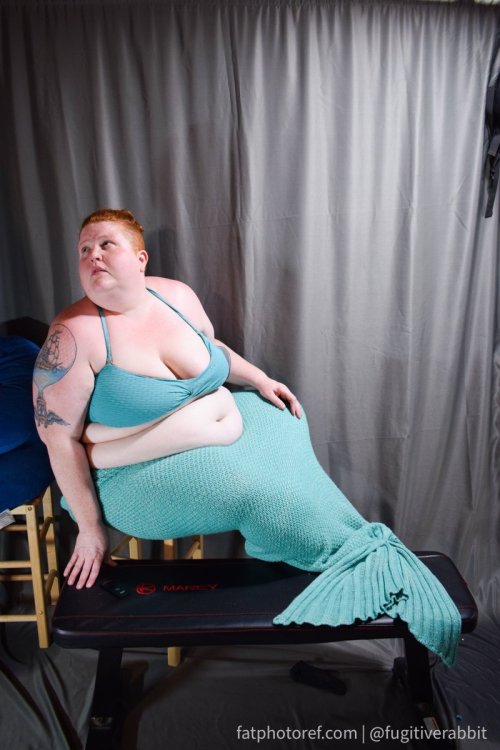


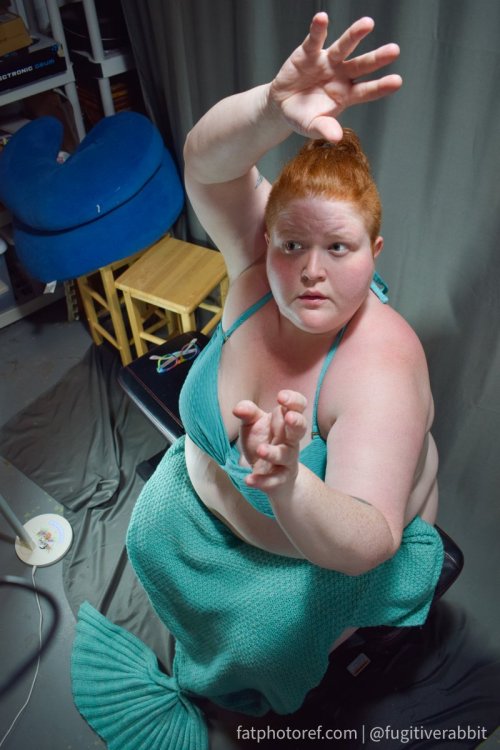
Just a reminder about fatphotoref.com—it exists!! I'll be updating with new photos next week and hopefully more regularly after that. Request access by going to bit.ly/fpraccess 💙🧜♀️ happy mer may!
What would your advice for just-starting-out young authors be?
I love new writers! I’ve never known a better way to escape my reality and live a thousand different lives.
I started writing when I was young, maybe 12 or 13 years old. I am now 25, and very much consider myself to be a child, but still, in my 10+ years of personal writing and classes, here are some of the best tips I can give anyone who is new to writing, regardless of age.
Read. Read. Read. Then read some more. The easiest and fastest way to learn how to write is by reading and studying how other people have written their stories. Study their balance of dialogue vs description vs action. Study the words they use and what they’re choosing to describe. Study the scenes that make you feel something, or pull you to the story even more, and dissect it until you understand how to do it.
Daydream. At night, in the morning, before and after school, during school, during work. When people are trying to talk to you, just daydream. Image worlds with populated moons. Imagine worlds with multiple human-like species all living in the same area. Image a boy who goes home and cries to his adoptive family parents, and girls who practices knife throwing every night to prepare for the apocalypse that no one sees coming. Dream of everything and anything because that’s how you keep and improve your creativity. Eventually you may even write something with it.
Write for yourself. Always start by writing what you enjoy, and love your characters and your stories. Everything about your first draft should be because you love the story, not what other people like. You will never please everyone, so start with yourself, and build a community with the ones who love your story as much as you do.
Do it on your own timeline. If you want to write a book in a month, edit the next and publish right after, do it. If you want to write the first five chapters of 8 books without finishing, do it. If, like me, you want to write your first novel at 18 years old, and 7 years later still not feel ready to publish, that’s ok! You are not falling behind anyone else, you are exactly where you should be on your own path.
Practice. Your writing will improve with practice, that’s how it works, it’s how it always works. No way to skip right to publishing a first draft and becoming famous for it. Practice and just keep writing, you will improve.
Challenge yourself. While you may love fantasy or romance, or maybe all your story ideas are too big for only one book and they all end up being series’, you need to try new things. Write a mystery short story. Write poetry on how you feel. Write one page on how you could survive a zombie apocalypse as long as you have your coffee in the morning, it doesn’t matter, just try new things. Trying new things is how I wrote this haiku: Take a deep inhale, Breathe fresh air into my lungs, I savorfreedom. Is it the greatest haiku ever? No, but it makes me happy, and reminds me that I can write, good or bad, and still be proud of myself.
Keep all your projects. Good or bad. Look back on them years later and think, yeah that was terrible, at least I’m better now. Or maybe think, this wasn’t as bad as I thought it was. It’s a progressive journey. You can take your time. DONT EVER SHAME YOUR YOUNGER SELF FOR THEIR WORK. THEY TRIED THEIR HARDEST AND WROTE AS BEST THEY COULD. WE ARE PROUD OF OURSELVES, NOT EMBARRASSED OR SHAMED. Whether the work is from years ago or days go. Be kind to yourself, no one else owes you that.
Compare. Compare to popular novels, compare to your friends stories or to people online. Compare and see if your character are developed enough, or if your story makes sense, or if it’s relatable. When comparing however, keep in mind that your written style will be different than all others writers. Your first novel will not be the same as an author’s 10th book that just went viral on TikTok. It takes practice and time. Compare for style, technique, structure and plot. Not for popularity, worth, importance, and don’t feel down thinking that someone writing at a higher grade level makes them better, it doesn’t.
Share your work. If you are embarrassed, use a pen name. That’s perfectly fine. Put your work out there and get feedback. Having one person saying your story is (negative criticism here) is going to happen, don’t freak out. It doesn’t mean your story is flawed and should be tossed. If most people are saying that, then maybe it’s time to revisit the story and plot. Getting feedback from people reading your story is important, you want to ask specific questions so you don’t get generic answers. Get real reviews from real people, the mean voice in your head doesn’t get a say.
Learn the difference between perfect and done. I know, I know. Perfectionists around the world just scoffed and thought ‘I would if I could’. Here’s the thing, it’ll never be perfect. A word won’t be right, you can’t find the right way to convey an emotion, your choice of vocabulary isn’t up to your standards, I get it. You want your work to be absolute perfection so that everyone loves it and no one can say a bad thing about it, but it doesn’t work that way. Instead make it to ‘complete’, then nitpick some details, then it’s done. Done is good, it’s where you want to be.
Self-publishing? Pay for a professional editor and a graphic designer. It makes a difference, I promise.
There’s lots of others, but I would say as a writer-starter-pack, these should get you started, then you will learn lessons all on your own, or find them as you’re writing later on. Truly, just have fun, and the rest will come with time.
Happy Writing!
Willow
How to avoid White Room Syndrome
by Writerthreads on Instagram
A common problem writers face is "white room syndrome"—when scenes feel like they’re happening in an empty white room. To avoid this, it's important to describe settings in a way that makes them feel real and alive, without overloading readers with too much detail. Here are a few tips below to help!
Focus on a few key details
You don’t need to describe everything in the scene—just pick a couple of specific, memorable details to bring the setting to life. Maybe it’s the creaky floorboards in an old house, the musty smell of a forgotten attic, or the soft hum of a refrigerator in a small kitchen. These little details help anchor the scene and give readers something to picture, without dragging the action with heaps of descriptions.
Engage the senses
Instead of just focusing on what characters can see, try to incorporate all five senses—what do they hear, smell, feel, or even taste? Describe the smell of fresh bread from a nearby bakery, or the damp chill of a foggy morning. This adds a lot of depth and make the location feel more real and imaginable.
Mix descriptions with actions
Have characters interact with the environment. How do your characters move through the space? Are they brushing their hands over a dusty bookshelf, shuffling through fallen leaves, or squeezing through a crowded subway car? Instead of dumping a paragraph of description, mix it in with the action or dialogue.
Use the setting to reflect a mood or theme
Sometimes, the setting can do more than just provide a backdrop—it can reinforce the mood of a scene or even reflect a theme in the story. A stormy night might enhance tension, while a warm, sunny day might highlight a moment of peace. The environment can add an extra layer to what’s happening symbolically.
Here's an example of writing a description that hopefully feels alive and realistic, without dragging the action:
The bookstore was tucked between two brick buildings, its faded sign creaking with every gust of wind. Inside, the air was thick with the scent of worn paper and dust, mingling with the faint aroma of freshly brewed coffee from a corner café down the street. The wooden floorboards groaned as Ella wandered between the shelves, her fingertips brushing the spines of forgotten novels. Somewhere in the back, the soft sound of jazz crackled from an ancient radio.
Hope these tips help in your writing!
Can't afford art school?
After seeing post like this 👇

And this gem 👇
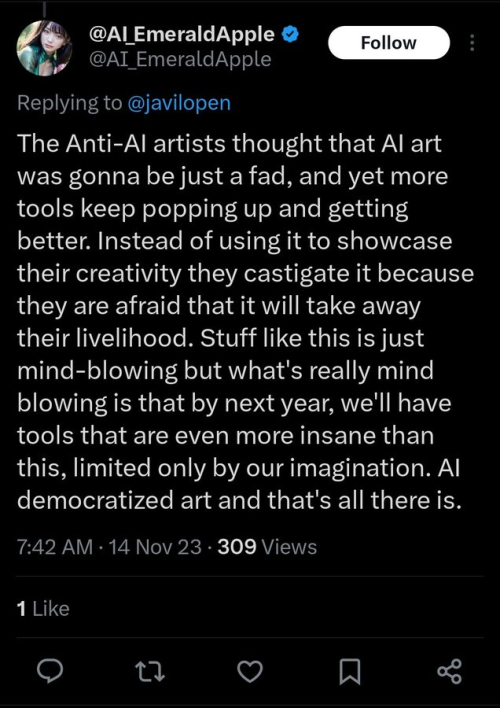
As well as countless of others from the AI generator community. Just talking about how "inaccessible art" is, I decided why not show how wrong these guys are while also helping anyone who actually wants to learn.
Here is the first one ART TEACHERS! There are plenty online and in places like youtube.
📺Here is my list:
Proko (Free)
Marc Brunet (Free but he does have other classes for a cheap price. Use to work for Blizzard)
Aaron Rutten (free)
BoroCG (free)
Jesse J. Jones (free, talks about animating)
Jesus Conde (free)
Mohammed Agbadi (free, he gives some advice in some videos and talks about art)
Ross Draws (free, he does have other classes for a good price)
SamDoesArts (free, gives good advice and critiques)
Drawfee Show (free, they do give some good advice and great inspiration)
The Art of Aaron Blaise ( useful tips for digital art and animation. Was an animator for Disney)
Bobby Chiu ( useful tips and interviews with artist who are in the industry or making a living as artist)
Second part BOOKS, I have collected some books that have helped me and might help others.
📚Here is my list:
The "how to draw manga" series produced by Graphic-sha. These are for manga artist but they give great advice and information.
"Creating characters with personality" by Tom Bancroft. A great book that can help not just people who draw cartoons but also realistic ones. As it helps you with facial ques and how to make a character interesting.
"Albinus on anatomy" by Robert Beverly Hale and Terence Coyle. Great book to help someone learn basic anatomy.
"Artistic Anatomy" by Dr. Paul Richer and Robert Beverly Hale. A good book if you want to go further in-depth with anatomy.
"Directing the story" by Francis Glebas. A good book if you want to Story board or make comics.
"Animal Anatomy for Artists" by Eliot Goldfinger. A good book for if you want to draw animals or creatures.
"Constructive Anatomy: with almost 500 illustrations" by George B. Bridgman. A great book to help you block out shadows in your figures and see them in a more 3 diamantine way.
"Dynamic Anatomy: Revised and expand" by Burne Hogarth. A book that shows how to block out shapes and easily understand what you are looking out. When it comes to human subjects.
"An Atlas of animal anatomy for artist" by W. Ellenberger and H. Dittrich and H. Baum. This is another good one for people who want to draw animals or creatures.
Etherington Brothers, they make books and have a free blog with art tips.
As for Supplies, I recommend starting out cheap, buying Pencils and art paper at dollar tree or 5 below. For digital art, I recommend not starting with a screen art drawing tablet as they are more expensive.
For the Best art Tablet I recommend either Xp-pen, Bamboo or Huion. Some can range from about 40$ to the thousands.
💻As for art programs here is a list of Free to pay.
Clip Studio paint ( you can choose to pay once or sub and get updates)
Procreate ( pay once for $9.99)
Blender (for 3D modules/sculpting, ect Free)
PaintTool SAI (pay but has a 31 day free trail)
Krita (Free)
mypaint (free)
FireAlpaca (free)
Libresprite (free, for pixel art)
Those are the ones I can recall.
So do with this information as you will but as you can tell there are ways to learn how to become an artist, without breaking the bank. The only thing that might be stopping YOU from using any of these things, is YOU.
I have made time to learn to draw and many artist have too. Either in-between working two jobs or taking care of your family and a job or regular school and chores. YOU just have to take the time or use some time management, it really doesn't take long to practice for like an hour or less. YOU also don't have to do it every day, just once or three times a week is fine.
Hope this was helpful and have a great day.


These brushes aren’t the most complex, but they are what I made on the fly to make drawing hair easier, instead of hand drawing every detail like I’ve done most of my life lmao.
You can find the png files for a bitmap here, along with screenshots of my settings [I use this brush in Medibang Paint Pro, a free art program]. My settings use it as a scatter watercolour, I think it works well with the watercolor for color blending but you could theoretically use it just as a scatter.
Though, the brush settings are something not that important: the size, particle size, scatter strength, opacity, compliment, and color mixing are all things I change frequently when working.
Free to use, just don’t claim as your own. If you want to support me, you can leave a tip at my Kofi.
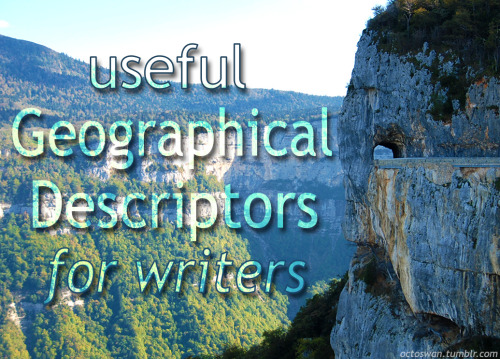


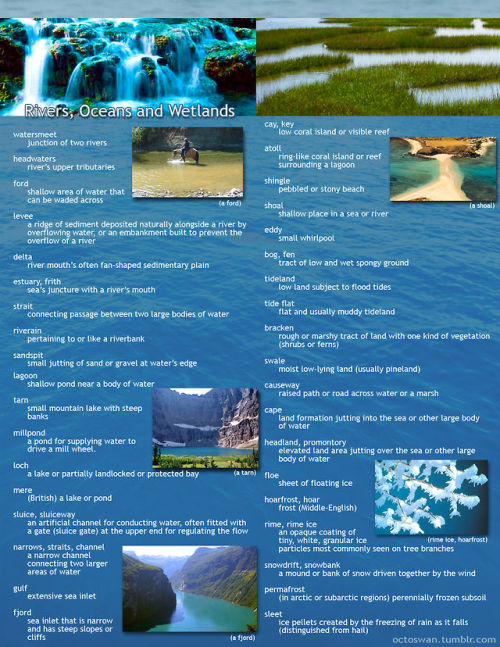
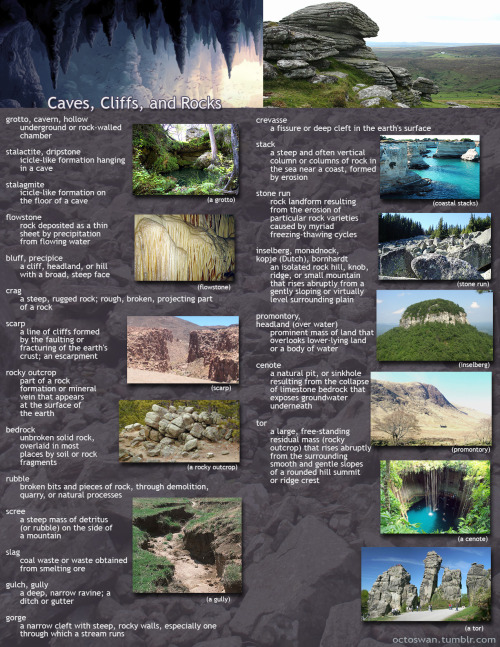
I made these as a way to compile all the geographical vocabulary that I thought was useful and interesting for writers. Some descriptors share categories, and some are simplified, but for the most part everything is in its proper place. Not all the words are as useable as others, and some might take tricky wording to pull off, but I hope these prove useful to all you writers out there!
(save the images to zoom in on the pics)
-
 weeklink liked this · 1 month ago
weeklink liked this · 1 month ago -
 basket-of-references reblogged this · 5 months ago
basket-of-references reblogged this · 5 months ago -
 crazycreative425 liked this · 8 months ago
crazycreative425 liked this · 8 months ago -
 ace44drawzz reblogged this · 9 months ago
ace44drawzz reblogged this · 9 months ago -
 niimbus liked this · 10 months ago
niimbus liked this · 10 months ago -
 bar00knee liked this · 10 months ago
bar00knee liked this · 10 months ago -
 master-skywalker liked this · 1 year ago
master-skywalker liked this · 1 year ago -
 tealeo reblogged this · 1 year ago
tealeo reblogged this · 1 year ago -
 quitornanthdang liked this · 1 year ago
quitornanthdang liked this · 1 year ago -
 crowdoesart21 reblogged this · 1 year ago
crowdoesart21 reblogged this · 1 year ago -
 martialwriter liked this · 1 year ago
martialwriter liked this · 1 year ago -
 mothofmay liked this · 1 year ago
mothofmay liked this · 1 year ago -
 sapphiresmuse liked this · 1 year ago
sapphiresmuse liked this · 1 year ago -
 abecediary liked this · 1 year ago
abecediary liked this · 1 year ago -
 sweetearthandnorthernsky liked this · 2 years ago
sweetearthandnorthernsky liked this · 2 years ago -
 basket-of-references reblogged this · 2 years ago
basket-of-references reblogged this · 2 years ago -
 rougemarsupial liked this · 2 years ago
rougemarsupial liked this · 2 years ago -
 kysnv reblogged this · 2 years ago
kysnv reblogged this · 2 years ago -
 kysnv liked this · 2 years ago
kysnv liked this · 2 years ago -
 silvermarmoset reblogged this · 2 years ago
silvermarmoset reblogged this · 2 years ago -
 angelvom1t liked this · 2 years ago
angelvom1t liked this · 2 years ago -
 squidfucker reblogged this · 2 years ago
squidfucker reblogged this · 2 years ago -
 dreamingcoyotes reblogged this · 2 years ago
dreamingcoyotes reblogged this · 2 years ago -
 derek38 liked this · 2 years ago
derek38 liked this · 2 years ago -
 honeydew-jam reblogged this · 2 years ago
honeydew-jam reblogged this · 2 years ago -
 tinyparticlesofdoom reblogged this · 2 years ago
tinyparticlesofdoom reblogged this · 2 years ago -
 miss-little-chaperone liked this · 2 years ago
miss-little-chaperone liked this · 2 years ago -
 totallyfakeartist liked this · 2 years ago
totallyfakeartist liked this · 2 years ago -
 totallyfakeartist reblogged this · 2 years ago
totallyfakeartist reblogged this · 2 years ago -
 leanor-tan liked this · 2 years ago
leanor-tan liked this · 2 years ago -
 sli-jewel-slime reblogged this · 2 years ago
sli-jewel-slime reblogged this · 2 years ago -
 bestial-liry liked this · 2 years ago
bestial-liry liked this · 2 years ago -
 tealeo reblogged this · 2 years ago
tealeo reblogged this · 2 years ago -
 p0pp3t liked this · 2 years ago
p0pp3t liked this · 2 years ago -
 thenornssurearebitches reblogged this · 2 years ago
thenornssurearebitches reblogged this · 2 years ago -
 thenornssurearebitches liked this · 2 years ago
thenornssurearebitches liked this · 2 years ago -
 novakat4168 reblogged this · 2 years ago
novakat4168 reblogged this · 2 years ago -
 robocatfan reblogged this · 2 years ago
robocatfan reblogged this · 2 years ago -
 robocatfan liked this · 2 years ago
robocatfan liked this · 2 years ago

